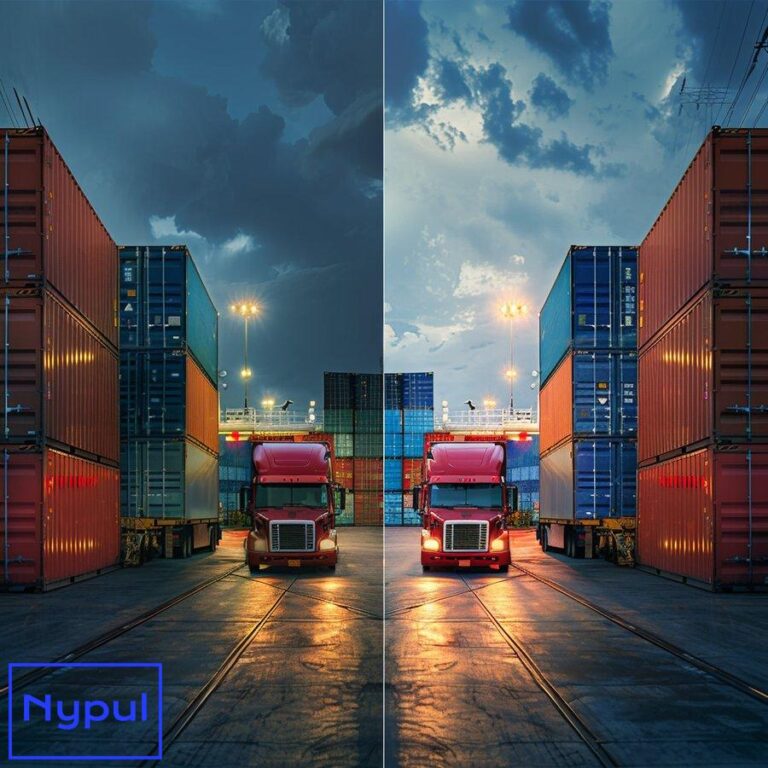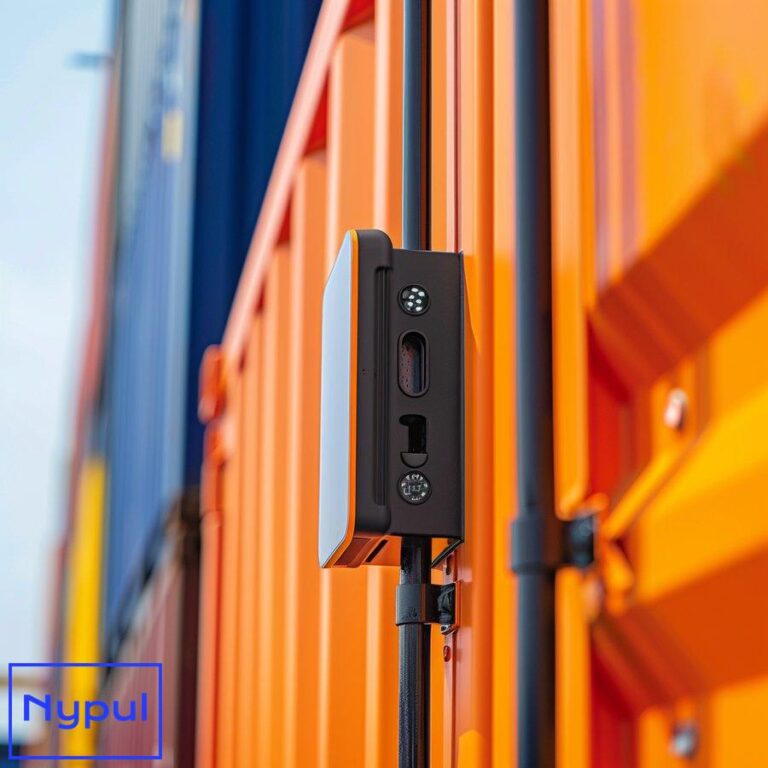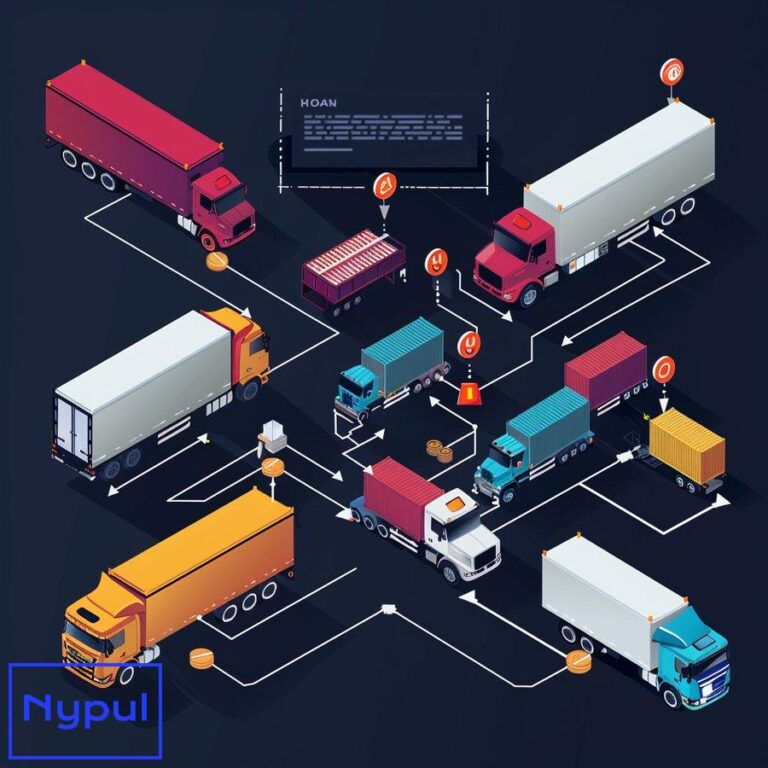What Is Intermodal Transport Bill of Lading
What is an Intermodal Transport Bill of Lading?
An intermodal transport bill of lading, also known as an intermodal bill of lading or multimodal bill of lading, is a document that serves as a contract of carriage, receipt of goods, and document of title in intermodal freight transportation. It covers the entire journey of goods transported using two or more modes of transport, such as ship, rail, and truck, under a single contract.
![]()

The intermodal bill of lading consolidates the responsibilities and liabilities of the various carriers involved in the intermodal transport chain. It provides a unified document that simplifies the documentation process and ensures a smooth flow of goods from the point of origin to the final destination.
Key Functions of an Intermodal Transport Bill of Lading
-
Contract of Carriage: The intermodal bill of lading serves as a legally binding contract between the shipper and the intermodal transport operator, outlining the terms and conditions of the freight transportation.
-
Receipt of Goods: It acknowledges the receipt of goods by the intermodal transport operator and provides evidence of the type, quantity, and condition of the goods at the time of pickup.
-
Document of Title: The intermodal bill of lading functions as a document of title, allowing the holder to claim ownership of the goods and control their delivery.
Advantages of Using an Intermodal Transport Bill of Lading
-
Simplified Documentation: By consolidating multiple transport documents into a single intermodal bill of lading, the documentation process becomes more efficient and less prone to errors.
-
Reduced Liability: The intermodal transport operator assumes liability for the entire journey, minimizing the risk of disputes between different carriers.
-
Improved Tracking: Intermodal bills of lading often include tracking information, allowing shippers and consignees to monitor the progress of their shipments.
-
Cost-effectiveness: Intermodal transport can be more cost-effective than traditional single-mode transportation, especially for long-distance shipments.
How Does an Intermodal Transport Bill of Lading Differ from Other Types?

Intermodal transport bills of lading differ from traditional bills of lading in several key aspects:
-
Multimodal Transport: Intermodal bills of lading cover the entire journey using multiple modes of transport, while traditional bills of lading are typically mode-specific.
-
Single Contract: Intermodal bills of lading are issued under a single contract with the intermodal transport operator, whereas traditional bills of lading may involve multiple contracts with different carriers.
-
Liability: The intermodal transport operator assumes liability for the entire journey, while in traditional transport, liability may be divided among different carriers based on their respective legs of the journey.
-
Documentation: Intermodal bills of lading consolidate multiple transport documents into a single document, simplifying the documentation process.
What Key Information is Included in an Intermodal Transport Bill of Lading?
An intermodal transport bill of lading typically includes the following key information:
-
Shipper’s Name and Address: The name and address of the party responsible for sending the goods.

-
Consignee’s Name and Address: The name and address of the party designated to receive the goods at the final destination.
-
Notify Party: The name and contact information of the party to be notified upon arrival of the goods.
-
Description of Goods: A detailed description of the goods being transported, including the type, quantity, and any special handling requirements.
-
Container Information: Details about the container(s) used for the shipment, such as the container number, seal number, and size/type.
-
Place of Receipt and Delivery: The locations where the goods are received by the intermodal transport operator and where they are to be delivered.
-
Freight Charges: Information about the freight charges, including the amount, currency, and payment terms.
-
Signature: The signature of the intermodal transport operator or their authorized representative, acknowledging receipt of the goods.
-
Tracking Information: Details about the tracking system used for the shipment, such as the tracking number and any relevant websites or contact information.
-
Applicable Rules and Regulations: References to the specific rules, regulations, or conventions governing the intermodal transport bill of lading, such as the Uniform Customs and Practice for Documentary Credits (UCP) or the United Nations Convention on Contracts for the International Carriage of Goods Wholly or Partly by Sea (the “Rotterdam Rules”).
What are the Legal Aspects and Regulations Governing Intermodal Transport Bills of Lading?
The legal aspects and regulations governing intermodal transport bills of lading vary depending on the countries involved in the transport chain and the specific modes of transport used. However, there are some common principles and international conventions that apply:
-
Contractual Obligations: The intermodal transport bill of lading serves as a legally binding contract between the shipper and the intermodal transport operator, outlining their respective rights and obligations.
-
Liability Limitations: Most legal frameworks, such as the Hague-Visby Rules and the Rotterdam Rules, set limits on the liability of the intermodal transport operator in case of loss, damage, or delay of the goods.
-
Applicable Law and Jurisdiction: The intermodal bill of lading typically specifies the applicable law and jurisdiction for resolving disputes related to the contract of carriage.
-
Negotiability: Depending on the wording used in the bill of lading, it may be negotiable, allowing the holder to transfer ownership of the goods to a third party.
-
Freight Forwarders’ Liability: In some cases, freight forwarders acting as intermodal transport operators may be subject to specific regulations, such as the FIATA Multimodal Transport Bill of Lading rules.
-
Customs and Security Requirements: Intermodal transport bills of lading must comply with customs and security regulations in the countries involved, such as the Customs-Trade Partnership Against Terrorism (C-TPAT) program in the United States.
How Do Electronic Intermodal Transport Bills of Lading Work?
Electronic intermodal transport bills of lading, also known as e-bills of lading, are digital versions of traditional paper-based bills of lading. They offer several advantages, including reduced paperwork, improved efficiency, and enhanced security.
Key Features of Electronic Intermodal Transport Bills of Lading
-
Digital Signatures: E-bills of lading use digital signatures to authenticate the document and ensure its integrity.


-
Secure Data Transfer: The data is transmitted electronically between parties using secure communication channels, such as encrypted email or online platforms.
-
Reduced Risk of Loss or Damage: Electronic bills of lading eliminate the risk of physical documents being lost, damaged, or delayed in transit.
-
Improved Tracking: E-bills of lading often integrate with tracking systems, providing real-time updates on the status of the shipment.
-
Reduced Costs: By eliminating the need for printing, storage, and physical transportation of documents, electronic bills of lading can significantly reduce costs associated with traditional paper-based systems.
Adoption of Electronic Intermodal Transport Bills of Lading
The adoption of electronic intermodal transport bills of lading is gradually increasing, but there are still some challenges to overcome:
-
Legal Recognition: Some jurisdictions may not fully recognize the legal validity of electronic bills of lading, which can hinder their widespread adoption.
-
Technological Barriers: Smaller companies or those with limited technological resources may face challenges in implementing and integrating electronic bill of lading systems.
-
Industry Acceptance: Widespread adoption of e-bills of lading requires a critical mass of industry participants to embrace the technology and collaborate on standardized processes.
-
Data Security and Privacy: Concerns about data security and privacy, such as unauthorized access or data breaches, need to be addressed to build trust in electronic bill of lading systems.
What Challenges are Associated with Intermodal Transport Bills of Lading?
While intermodal transport bills of lading offer numerous benefits, there are also some challenges associated with their use:

-
Complexity: Intermodal transport involves multiple modes of transport, each with its own regulations, documentation requirements, and liability regimes. Navigating this complexity can be challenging for shippers and carriers.
-
Liability Allocation: In case of loss, damage, or delay, determining the responsible party can be difficult when multiple carriers are involved in the transport chain.
-
Customs and Security Compliance: Intermodal transport requires compliance with customs and security regulations in multiple countries, which can be time-consuming and costly.
-
Tracking and Visibility: Achieving real-time visibility and accurate tracking of intermodal shipments can be challenging due to the involvement of multiple carriers and the potential for delays at modal interchange points.
-
Standardization: The lack of standardized processes and documentation across different countries and transport modes can lead to inefficiencies and increased costs.
-
Dispute Resolution: In case of disputes related to intermodal transport bills of lading, resolving them can be complex due to the involvement of multiple parties and jurisdictions.
Case Studies: Intermodal Transport Bills of Lading in Action

Case Study 1: Streamlining Intermodal Transport for a Global Retailer
A large global retailer faced challenges in managing the complexity of its intermodal supply chain. By implementing a standardized intermodal bill of lading system, the company was able to:
- Reduce documentation errors and delays
- Improve visibility and tracking of shipments
- Streamline the claims management process
- Achieve cost savings through more efficient intermodal transport
Case Study 2: Adapting to Electronic Bills of Lading in the Automotive Industry
An automotive manufacturer recognized the potential benefits of electronic intermodal transport bills of lading and worked with its logistics partners to implement a digital system. The key outcomes included:
- Faster document processing and reduced paperwork
- Enhanced data security and reduced risk of document loss
- Improved collaboration and information sharing among supply chain partners
- Increased efficiency and responsiveness in the automotive supply chain
Case Study 3: Navigating Customs and Security Requirements with Intermodal Bills of Lading
A chemical manufacturer faced challenges in meeting customs and security requirements for its intermodal shipments. By incorporating specific clauses in its intermodal bills of lading and working closely with customs brokers, the company was able to:
- Ensure compliance with evolving customs and security regulations
- Minimize delays and disruptions at border crossings
- Maintain the integrity and safety of hazardous materials shipments
- Strengthen relationships with customs authorities and regulatory bodies
These case studies demonstrate how intermodal transport bills of lading can be effectively leveraged to address the challenges of modern supply chains, improve efficiency, and drive cost savings.






